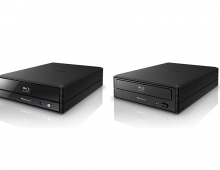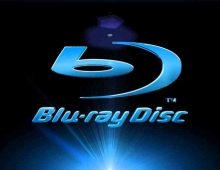
Dolby to Bring 3-D Video to Blu-ray
Dolby Laboratories is proposin
Dolby, a company best known for its audio technology, said that it is talking with content providers about encoding its digital 3-D technology into Blu-ray movies.
Dolby Labs will give a first peek of its approach for playing stereo 3-D video on digital TVs and Blu-ray players at the Consumer Electronics Show this week.
The technology, which uses a checkerboard pixel pattern similar to techniques employed in current 3-D-ready digital TVs from Mitsubishi and Samsung, can be used with active or passive 3-D glasses. It would work on any 3-D enabled TV with a standard Blu-ray player.
Dolby has not said when it might release products based on the approach.
Groups including the Society of Motion Picture and Television Engineers (SMPTE), the Blu-ray Disc Association (BDA) and the Consumer Electronics Association (CEA) are working on ways to help standardize 3-D home entertainment. SMPTE has recently formed a Task Force on "3D Home Display Formats," in an effort to define what content mastering standards would be needed to establish easy distribution of stereoscopic image content via multiple types of distribution channels (e.g. packaged, broadcast, satellite, cable, internet) for the purpose of rapid adoption of this content on a fixed home display.
The Blu-Ray Disc Association has been also discussing the possibilities to support the stereo 3-D technologies.
Philips also demonstrated a 3D on Blu-ray at IFA 2008 last September. The demo shows that the company's 2D-plus-Depth content format can be applied to Blu-ray enabling a 3D movie viewing experience on a variety of displays.
Japanese Panasonic has also proposed a 3-D Blu-ray standard to the BDA. The company's 3D full HD System includes a Blu-ray Disc player that distributes full high-definition images to left eye and right eye. The authoring technology used for the creation of the 3D content has been developed by Panasonic Hollywood Laboratory (PHL). The technology allowed recording of 3D images -- consisting of respective left and right 1080p full HD images -- onto a single, standard BD. The technology requires consumers to weari active shutter glasses that work in synchronization with an HD TC screen.
Dolby Labs will give a first peek of its approach for playing stereo 3-D video on digital TVs and Blu-ray players at the Consumer Electronics Show this week.
The technology, which uses a checkerboard pixel pattern similar to techniques employed in current 3-D-ready digital TVs from Mitsubishi and Samsung, can be used with active or passive 3-D glasses. It would work on any 3-D enabled TV with a standard Blu-ray player.
Dolby has not said when it might release products based on the approach.
Groups including the Society of Motion Picture and Television Engineers (SMPTE), the Blu-ray Disc Association (BDA) and the Consumer Electronics Association (CEA) are working on ways to help standardize 3-D home entertainment. SMPTE has recently formed a Task Force on "3D Home Display Formats," in an effort to define what content mastering standards would be needed to establish easy distribution of stereoscopic image content via multiple types of distribution channels (e.g. packaged, broadcast, satellite, cable, internet) for the purpose of rapid adoption of this content on a fixed home display.
The Blu-Ray Disc Association has been also discussing the possibilities to support the stereo 3-D technologies.
Philips also demonstrated a 3D on Blu-ray at IFA 2008 last September. The demo shows that the company's 2D-plus-Depth content format can be applied to Blu-ray enabling a 3D movie viewing experience on a variety of displays.
Japanese Panasonic has also proposed a 3-D Blu-ray standard to the BDA. The company's 3D full HD System includes a Blu-ray Disc player that distributes full high-definition images to left eye and right eye. The authoring technology used for the creation of the 3D content has been developed by Panasonic Hollywood Laboratory (PHL). The technology allowed recording of 3D images -- consisting of respective left and right 1080p full HD images -- onto a single, standard BD. The technology requires consumers to weari active shutter glasses that work in synchronization with an HD TC screen.





















